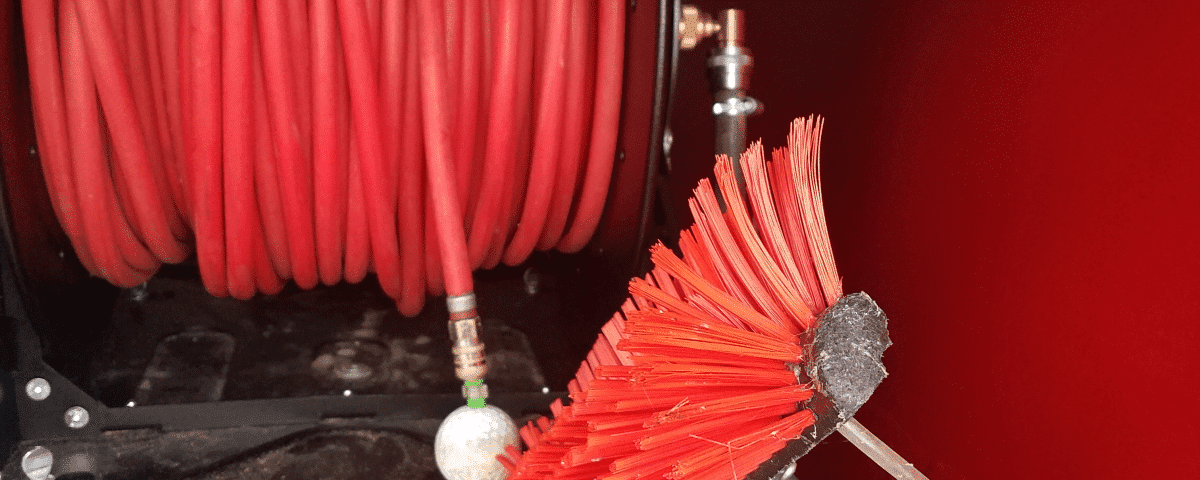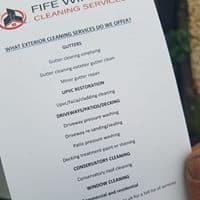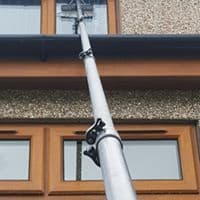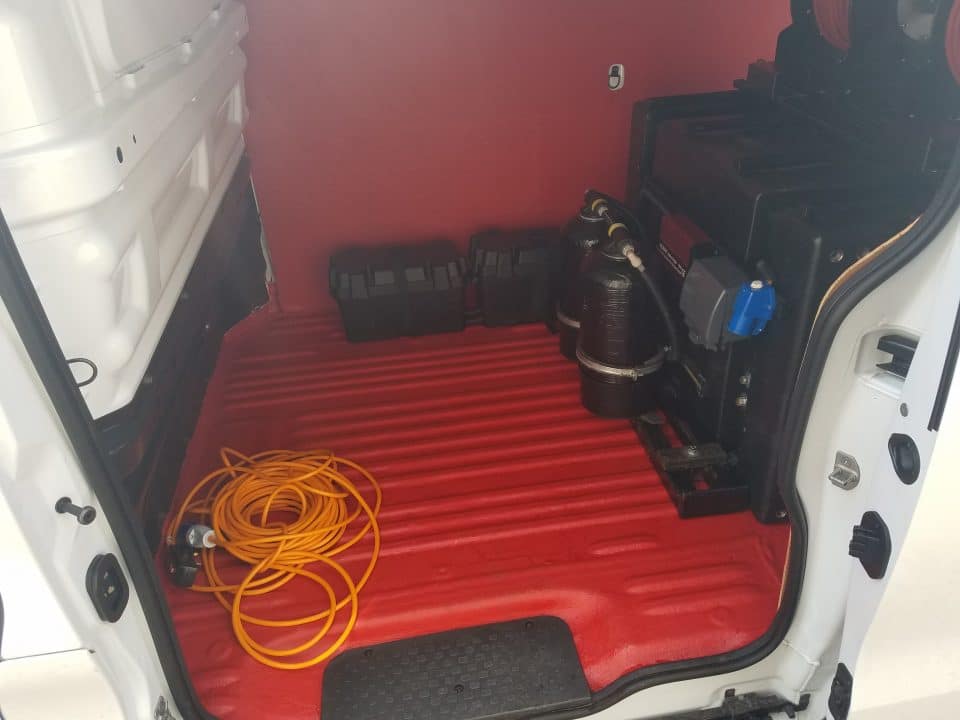CHANGING A TRADITIONAL WINDOW CLEANING ROUND TO WATERFED POLE?

Changing my Dunfermline and Kirkcaldy window cleaning round to waterfed pole/reach and wash has taken time, and also a lot of planning. Probably more so than was needed but the end result is there same, working in a way that is safer and that offers a better quality of finish. I have broken this blog into sections, to cover some of the areas of consideration for those who may also be looking to start cleaning windows with waterfed pole systems.

WHY WOULD YOU CHANGE TO WATERFED POLE?
There are various reasons but we can start with safety, here is a blog i wrote for one of my friends and this clearly highlights many of the risks that ladder work pose; along with how waterfed pole window cleaning can minimize this http://purpleelephant.co/safety-conscious-window-cleaners-in-chester/ You cannot go onto a building site now without noticing the scaffolding towers and hard hats everywhere, this is testament to the changing view of health and safety in some work places. Ladder use on one new build building site i worked on was banned. As shown above, deaths resulting from falls are still a big problem in the UK ; and you have to ask yourself why this is if some industry have such stringent health and safety policies such as the building trade.
The answer is simple, not all industry value health and safety the same. The UK working at height regulations only offer a recommendation that ladders should only be used as an alternative to other methods of window cleaning when they are the only means possible to do the job. A recommendation allows flexibility because there is no statutory law in place, and furthermore insurance cover for window cleaning is in place for ladder work as well; these offer incentives to start in this industry, often with little over heads. A set of ladders and a bucket are very cheap compared to a waterfed pole system, but the danger risk is always there. Trade spec ladder feet are made of hard plastic, but in winter frost and ice can and i promise you do increase the percentages of falls that happen.
Using waterfed pole allows the operator to work from the ground, and therefore completely eliminates fall risks. Associated with falls are also the general wear and tear on the body that ladder work presents, clicking knees and worn cartridge are common. I don’t know any traditional cleaners that don’t have some niggle or injury to tell of.
QUALITY OF WATERFED POLE WINDOW CLEANING
The finish waterfed pole window cleaning produces is second to none, but don’t expect it to always be as easy to get to grips with as traditional cleaning. When done right the frames will have a deeper clean than traditional cleaning methods can offer, and because there is no soap in the purified water we use; this limits how dirty the glass actually gets in between visits. Soaps attract dust, and this is why traditionally cleaned windows may seem dirtier by the time you next clean them. Further to the actual quality of window cleaning offered; are a few other waterfed pole aspects that deserve a mention, such as that there will be no ladder marks on the customers grass and no ladder feet damaging render; also there is more privacy for the customer due to no strange man peering through their bedroom window! It is worth mentioning the process of how to clean using waterfed pole now, and also what can go wrong and how to prevent this.
HOW TO DO A FIRST CLEAN WITH WATERFED POLE
One of the most important aspects of this system, is making sure that the first clean is done right. This will set you up down the line for easier maintenance cleans-or rather, regular window cleans. Everyone has various ways to do a first clean with the waterfed pole, but all generally agree that the frames should be treated separate from the glass on this initial clean. To do this, we scrub from the top of the frame along the sides of the frame and then move onto the sills. This is sterilizing the surrounds, because the number one cause of streaks and dirty runs after a first clean will likely be due to the surrounds not being sterile enough.
When we scrub the frames, we also scrub around the vents and then rinse over the frame/vents a couple of times as well. Many window cleaners will also flush the vents out on a first clean, done so by turning their rinse up and into the vents. This is done at the same time as the frame clean, and done so to prevent future issues with leaky vents dripping dirt onto the glass. Be careful not to get too much water inside the windows, and if the vents are closed this won’t be an issue anyway. It should be pointed out that not everyone flushes the vents, and many manage fine without this approach so I will leave it up to you to decide what suits, but some vents on your round may always leak and cause issues-do not be put off by this but instead you will come to realize the one or two that are to simply be avoided.
Speaking with bob from http://purpleelephant.co/ he suggests his top tip for first cleans is to add a traffic film remover to the clean, this is a soapy substance you can buy from any hard wear store or online, that breaks up dirt of the glass and the frames. You can spray this onto the brush head, have a bucket beside you full of it and dip the brush head into it or alternatively use a backpack and mix it with the water. Obviously the final rinse has to remove all the soap or the windows will streak badly.
After all the frames and vents are cleaned, the window sills are scrubbed and rinsed directly after this. Now it’s possible to leave a puddle of dirty water on the window sill if you don’t do this. Due to the fact there is lots of dirty water coming off the now spotlessly clean frames, so scrub those sills and then sweep the water from one end of the sill to the other and off the edge with your brush head. We now go back to the first window and rinse only on the glass, I personally do this one inch from the top of the glass and by keeping the brush head close to the glass-this avoids too much overspray catching the vents and causing more drips to come down.
The glass should have been given a light scrub along with the frames at the start and so when you go back to the first window (glass clean only) , give it another scrub and proceed with the rinse of glass only. Our other friend Darren at https://preispasst.de/ suggests rinsing in a zig zag formation on the final rinse, to try and create a sheet effect on the glass. The success of this sheet or cloaking depends on the type of glass you are cleaning, but is advisable to get good coverage of water all the same.
WHAT CAN GO WRONG WHEN CHANGING TO WATERFED POLE
Before we mention the actual window cleaning itself, it is worth noting that this system despite being around for a long time it still relatively new to a lot of customers and also is not always trusted due to that. Customers will appreciate this system when they are used to it, but I do think it is so different from traditional cleaning that sometimes it requires an explanation. I made up information sheets for all my customers who asked about this system, they were handed out to those who asked about what we were now doing. I know others who lettered their full round to state their intentions, but I personally felt this would end up being a negative and draw more suspicion and scrutiny. So ensure that you find a way to educate those that require this, which may also be a video showing how it works on your facebook business page or a blog like this that they can refer to, you decide.
The other main part in what can go wrong is down to operator error. With traditional you clean a window and leave when it is dry, you visually inspect that window and know its fine/or needs attention again. The mindset of waterfed pole window cleaning is different, everything you do in preparing that window/ frame on the first clean is what gives you the peace of mind, as you leave it to dry on its own. So what operator errors are common?
Lack of creating a sterile environment is the main thing that can work against you. I say sterile environment so you think of the frame/sill/window/vents/possible drips from overhanging render surround as one thing. Its vital to make sure that all vents are scrubbed, rinsed and if flushed (then flush until the water runs clear), think of the frame the same-all dirt must be removed and rinsed. So you WILL use a lot more water on first cleans waterfed pole BUT it will enable you to work so much faster once these initial cleans are done.
A final brief mention is worth giving to equipment, you have to understand how things work before you use them. An example is knowing how and why you change resin-to ensure that you are using 0 ppm resin, so the glass wont streak. Do you know how often to charge your battery for the system?, and are you comfortable with reeling out and in before you turn up at your first job. Having a trial run is important before you rock up at a house, not only to test your process of doing a first clean on your own home but also to get used to using the system itself. So to combat things going wrong here, befriend a local window cleaner who uses this system is my advice to you.
For a list of our full services please visit https://fifewindowcleaningservices.co.uk/
Blog written by Chris Fotheringham, Fife Window Cleaning Services




